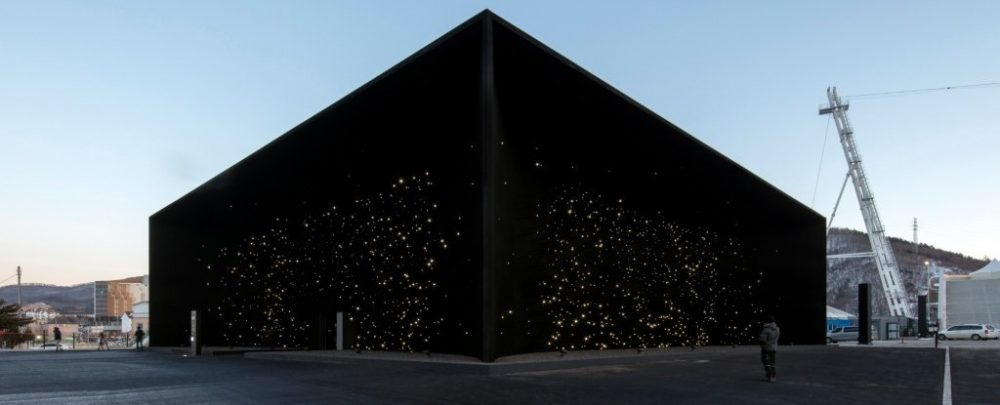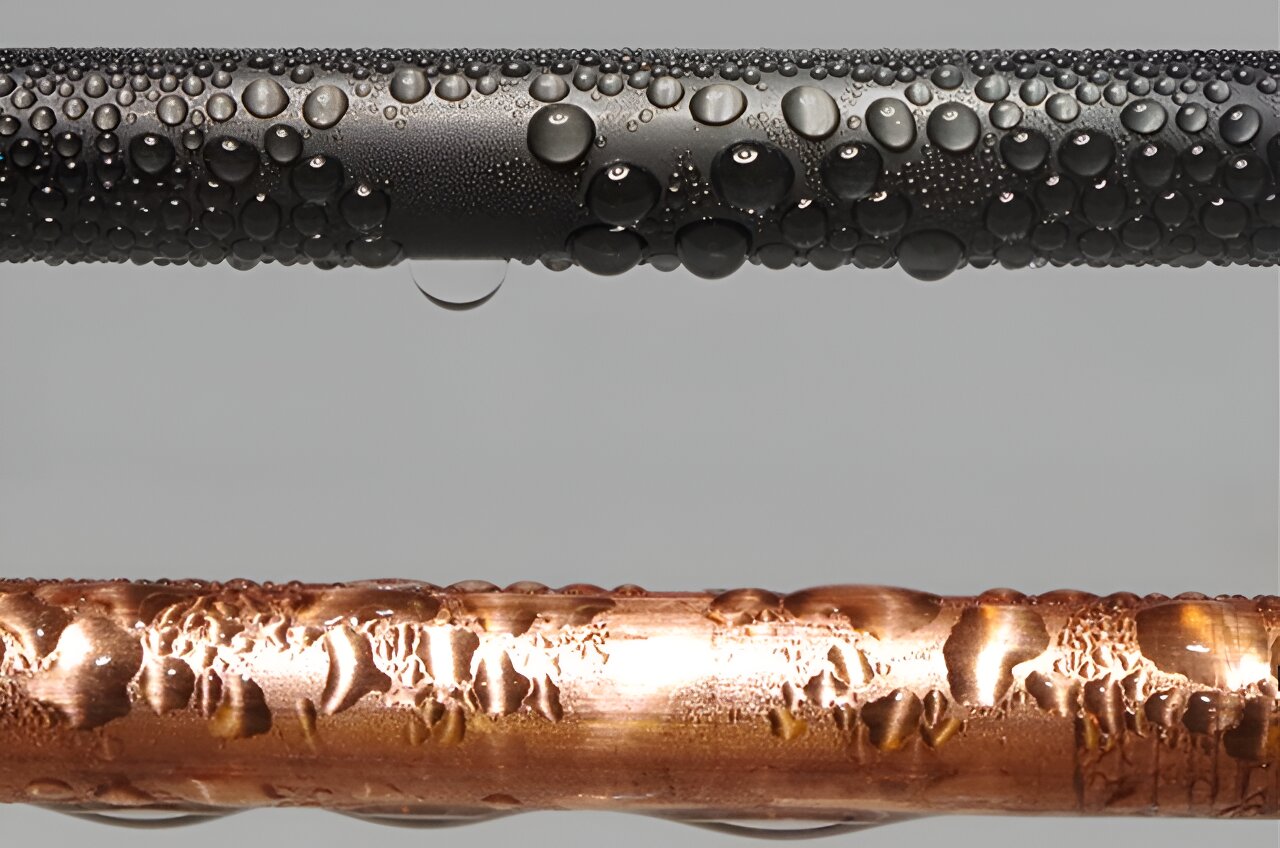British architect Asif Khan describes his Olympic pavilion as the “darkest building on Earth,” absorbing more than 99 percent of the light that hits it. Coated with layers of Vantablack VBx2, the building creates a beautiful visual illusion of a massive black void.
Khan designed this building for the 2018 Winter Olympics being held in Pyeongchang, South Korea. The exterior of the Hyundai Pavilion appears flat, but it is quite curved. Khan describes his building as a “schism in space.”
The pavilion has four curved walls. Rods tipped with tiny white lights protrude from these parabolic curves, giving the impression of stars against the night sky.
Khan “wanted to create the impression of a window cut into space”
“It will be like you’re looking into the depths of space itself,” said Khan. “As you approach the building that star field will grow to fill your entire field of view, and then you’ll enter as though you’re being absorbed into a cloud of blackness.”
Unlike the exterior, the interior of this Olympic pavilion is pure glossy white, with water droplets flowing across the hydrophobic surfaces.
“The water installation visitors discover inside is brightly lit in white. As your eyes adjust, you feel for a moment that the tiny water drops are at the scale of the stars,” Khan said.
“In the project, I wanted to move from the scale of the cosmos to the scale of water droplets in a few steps. The droplets contain the same hydrogen from the beginning of the universe as the stars.”







